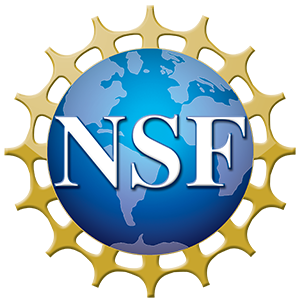
CUWiP Testimonials
"CUWiP continues to be the highlight of each year for me, and I encourage all undergraduate women of physics to attend...It gives you a chance to network with other undergraduate women, as well as graduate students, professors, women in industry, and allies in the cause of improving women’s standing in physics. It is an empowering experience, to say the least, and I hope that everyone, no matter their involvement in physics, or even the sciences, can experience such a fulfilling conference at some point in their lives."
- Amelia Plunk, Mount Holyoke College, creator of whatisaplunk.com
"I heard several really great talks by students who are doing undergraduate research. Several senior scientists have given talks about their research areas. There have also been some really fascinating panels on balancing work and life, careers, and how to get involved in undergraduate research. Female physics students are usually in classes in a room full of guys, so it’s great to see a room full of 160 female undergraduate students. I’m really enthused to see the level of interest, excitement and involvement of the students. They are having a blast, making new friends and learning a lot. The students asked questions of the undergraduate research panelists for over an hour!"
- Dr. Kevin Pitts, Associate Head of Undergraduate Programs at the University of Illinois at Urbana-Champaign
"Over the long weekend we got to attend talks from successful women in physics, present our own research, interact with other women in physics over free meals, and listen to panels discussing careers, grad school, and undergraduate research. We also got to tour Oak Ridge National Laboratory and see some of the incredible resources there, like the Spallation Neutron Source and their supercomputing facility...CUWiP and other women in physics events provide the opportunity for young women to network and gain motivation and support to continue physics."
- Nora Swisher, James Madison University
"After attending the 5th Annual Midwest Conference for Women in Physics, I feel so much more confident about what I would like to do! After two days of watching physicists give presentations on their research and different experiences in their fields, it seemed like I really knew what kinds of physics I found interesting versus which areas I found less interesting. For anyone who is unsure about exactly what they want to do, I highly suggest attending a conference!"
- Shannon Glavin, University of Illinois at Urbana-Champaign
"CUWiP has been an invaluable experience for me...Even though the time length was fairly short, the materials, information and experiences that came with it are rich in content. Distinguished women speakers/panelists from diverse branches of physics broadened my horizon of the physics world immensely, helped me to identify myself better, and even motivated me to devote myself more to this inspiring arena...I also appreciate the opportunity for undergraduate women who share the same prospect for the future to come together, and the opportunity for us to share our different stories and love of physics. Personally, I was also thrilled to receive a long email from a Cornell professor a week after the conference with detailed feedback to a presentation I gave during the conference. This letter, along with several useful links for additional literature that might shed light on my research and some instructions on future endeavors, is absolutely invaluable...This conference has invigorated me to move forward in physics with more determination and enthusiasm. I believe that every participant, like me, has enjoyed every single minute of this eye-opening experience. I highly recommend any woman who has some interest in physics to attend CUWiPs in the future."
- Zhuyun Xiao, Bryn Mawr College
History & Organization

 These conferences are supported in part by the National Science Foundation (PHY-1346627, PHY-1622510, and PHY-2012033) and by the Department of Energy (DE-SC0011076). Any opinions, findings, and conclusions or recommendations expressed are those of the author(s) and do not necessarily reflect the views of the National Science Foundation or the Department of Energy.
These conferences are supported in part by the National Science Foundation (PHY-1346627, PHY-1622510, and PHY-2012033) and by the Department of Energy (DE-SC0011076). Any opinions, findings, and conclusions or recommendations expressed are those of the author(s) and do not necessarily reflect the views of the National Science Foundation or the Department of Energy.
